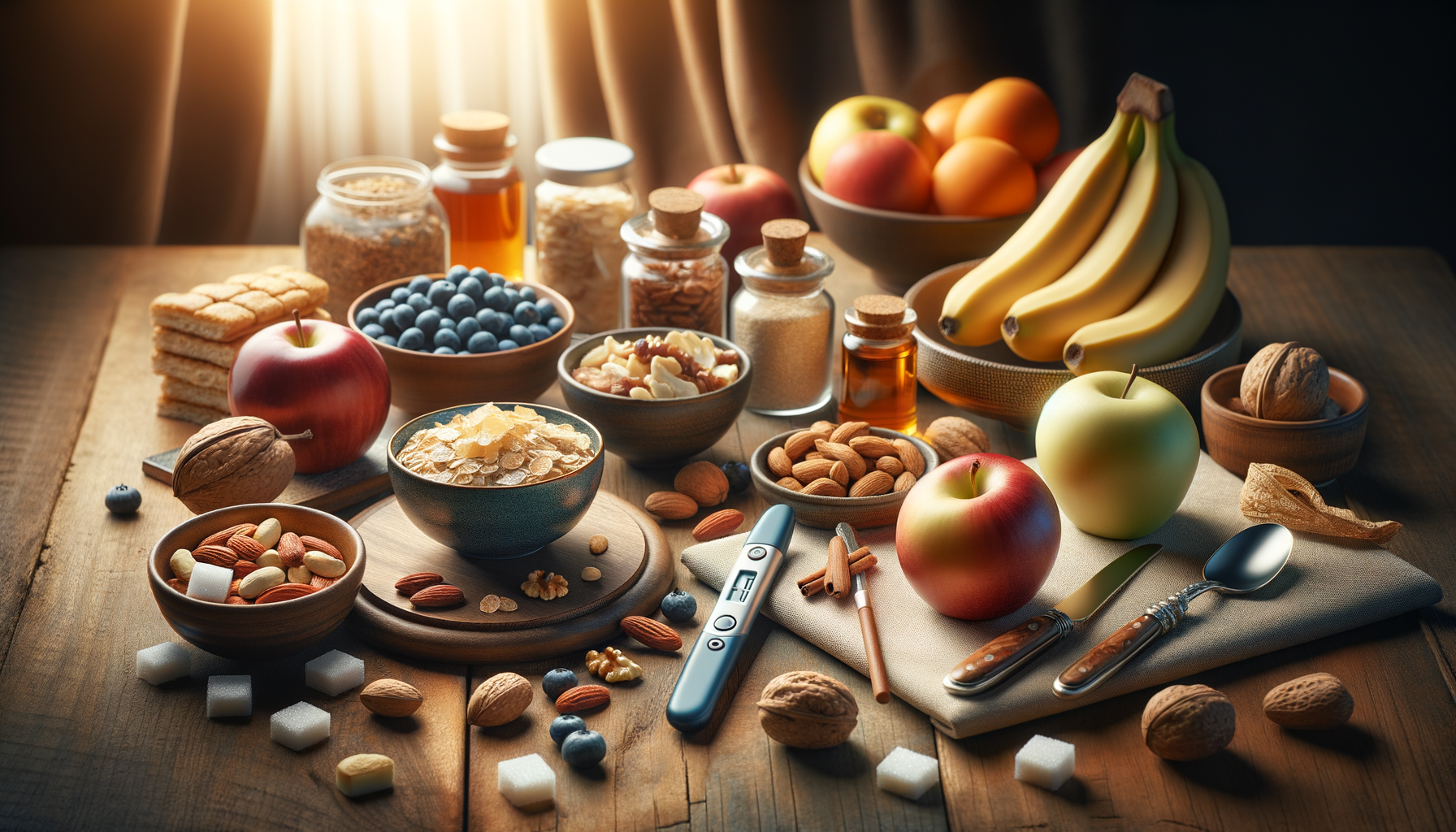Introduction to Diabetes Management Through Diet
Diabetes management is a crucial aspect of maintaining overall health for those living with the condition. One of the key components of effective management is a well-balanced diet. Snacks can play a significant role in this, offering a way to maintain energy levels and control blood sugar. Choosing the right snacks can make a difference in how well you manage your diabetes, particularly for those with type 2 diabetes. This article will explore healthy snack options and low-sugar diet tips to help you make informed choices.
Understanding Low-GI Snacks
Low-Glycemic Index (GI) foods are essential for diabetes management because they have a slower impact on blood sugar levels. Snacks with a low GI can help in maintaining blood sugar stability. Examples of low-GI snacks include plain nuts, which are not only low in sugar but also high in healthy fats and protein. Sugar-free Greek yogurt is another excellent choice, offering probiotics and protein without the added sugars. Boiled eggs provide a protein-rich option that is both filling and nutritious.
Including these low-GI snacks in your diet can help in controlling blood sugar levels and preventing spikes, making them a vital part of a diabetic-friendly diet. Additionally, these snacks contribute to satiety, reducing the likelihood of overeating at meals.
High-Fiber Snacks for Satiety and Blood Sugar Control
Fiber plays a significant role in managing diabetes by slowing down the digestion and absorption of carbohydrates, which helps in maintaining steady blood sugar levels. High-fiber snacks like fruits, vegetables, and whole grains can be beneficial. For instance, an apple with its skin provides both fiber and natural sweetness without causing a rapid increase in blood sugar. Carrot sticks or celery with hummus offer a crunchy, satisfying snack that is high in fiber and low in sugar.
Incorporating these high-fiber snacks into your daily routine can not only help with blood sugar management but also contribute to overall digestive health. They are particularly effective when combined with other nutrient-dense foods, creating a balanced and satisfying snack.
Low-Sugar Diet Tips for Diabetics
Managing sugar intake is crucial for those with diabetes. One effective strategy is to focus on whole foods rather than processed ones, as they typically contain less added sugar. Reading nutrition labels can help you identify hidden sugars in packaged foods. Opting for natural sweeteners like stevia or monk fruit in moderation can also be a way to satisfy sweet cravings without impacting blood sugar levels significantly.
Another tip is to be mindful of portion sizes, especially when it comes to carbohydrate-rich foods. Balancing these with proteins and healthy fats can help in reducing the overall glycemic impact of a meal. Planning meals and snacks ahead of time can also prevent impulsive eating and help maintain a low-sugar diet.
Conclusion: Making Informed Snack Choices
Choosing the right snacks is an integral part of managing diabetes effectively. By focusing on low-GI, high-fiber, and low-sugar options, individuals with diabetes can maintain better control over their blood sugar levels. Snacks like plain nuts, sugar-free Greek yogurt, and boiled eggs not only support blood sugar management but also provide essential nutrients and satiety.
By incorporating these dietary tips and snack ideas, those with diabetes can enjoy a varied and satisfying diet while managing their condition. Remember, it is always important to consult with a healthcare provider or a registered dietitian to tailor dietary choices to your specific needs.




Leave a Reply